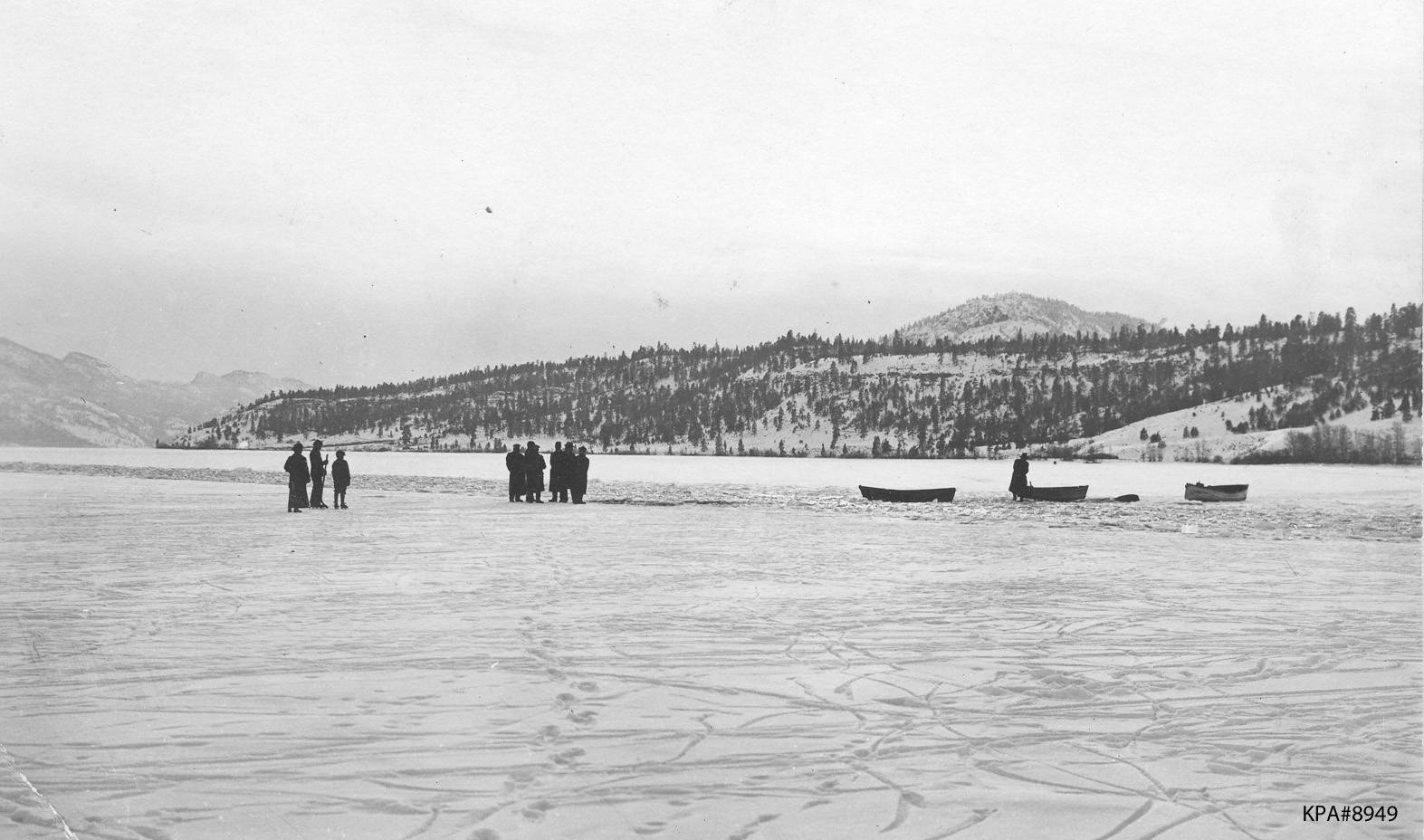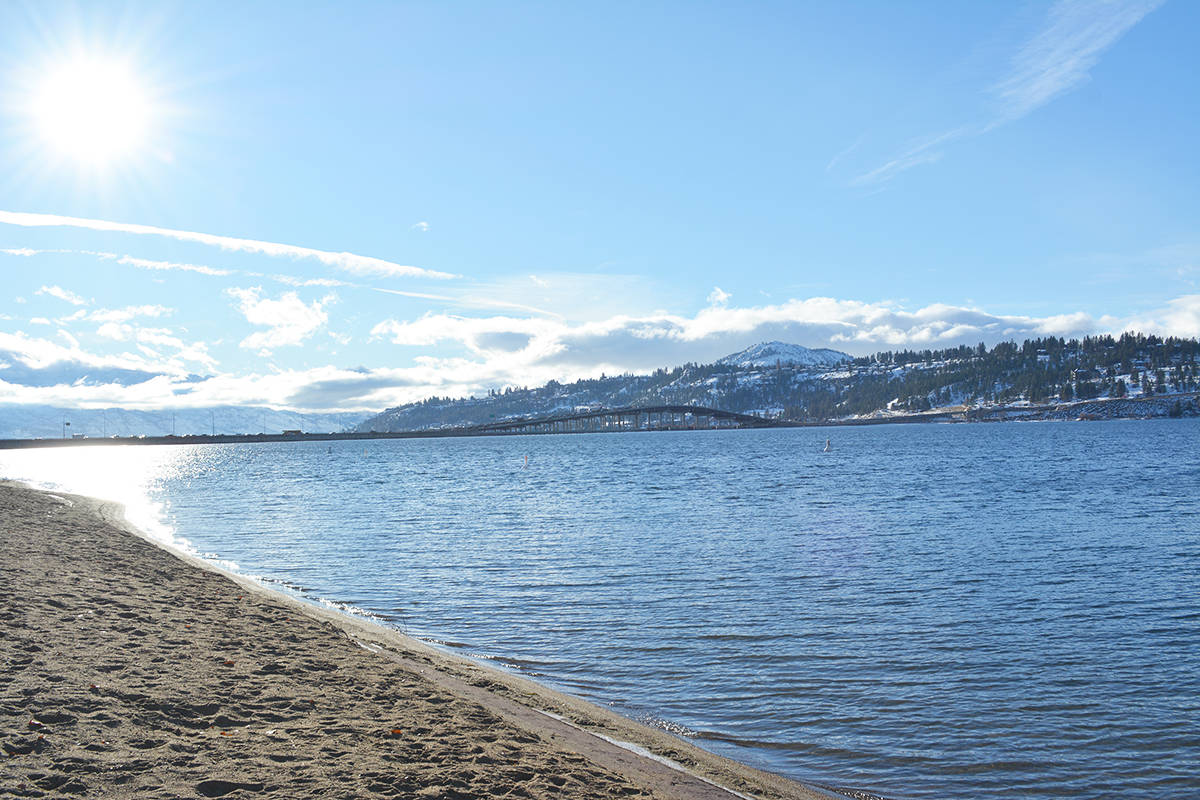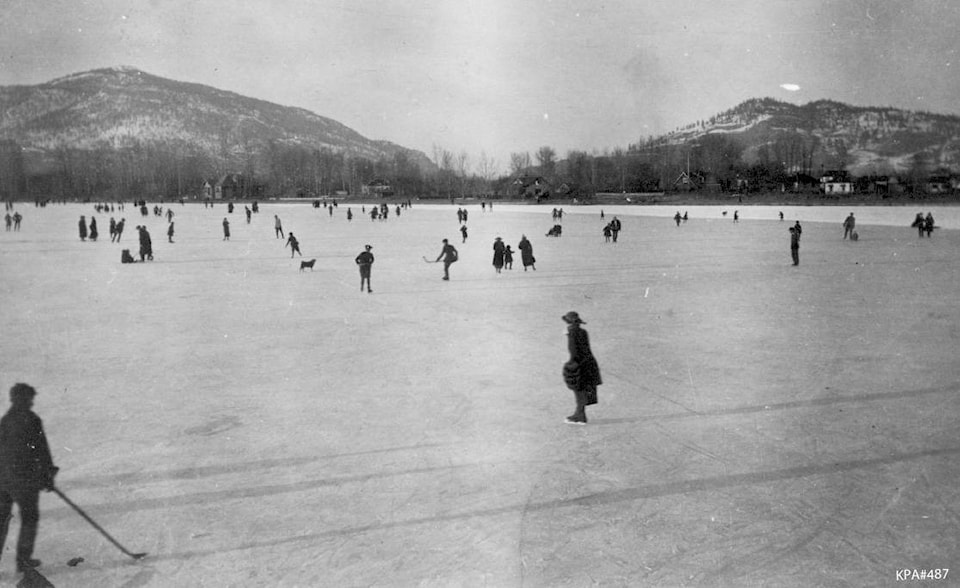With the Okanagansa���ʴ�ý�s warming winters due to climate change, the thought of cars driving across Okanagan Lake seems like a fantasy.
But one Kelowna historian remembers it happening during a cold winter in his youth.
Bob Hayes, president of the Okanagan Historical Society, said he was in his teens in 1968, which was the year he remembers a portion of the lake freezing thick enough, from Kelowna to West Kelowna, for vehicles to drive across.
Feature Friday: High snowpack has lake watchers on alert
Nowadays, cars on the lake can only be seen in old photographs. Before the lakesa���ʴ�ý�s floating bridge was finished in 1958, ice-breaking tugs were used to clear paths for a ferry.
sa���ʴ�ý�I taught for almost 30 years across the lake, and I drove the bridge many times. And I donsa���ʴ�ý�t remember in my teaching career, from 1980 to 2010 seeing vehicles then,sa���ʴ�ý� said Hayes.
He remembers even less ice now than in the 1980s, and recalled that the bay would freeze in West Kelowna near the bridge. His cousin who has lived in the area for 85 years, maintains the lake would freeze every seven years in the 1900s.
UBCO biology professor Ian Walker agreed the lake would freeze more frequently in the past. sa���ʴ�ý�In the early part of the previous century, back around the 1910s, 1920s, it used to freeze over more regularly than it does now,sa���ʴ�ý� he said.
In the last 50 years, there were times when the lake came close to freezing over, but it was never complete, said Walker. sa���ʴ�ý�Certainly you donsa���ʴ�ý�t see photographs of people skating on the lake or anything of that sort in recent years.sa���ʴ�ý�
Related: Kelowna looks to deal with climate change
Various automobile races took place on the lakes in Lake Country mainly in the 1980s and 1990s said retired racer, Richard Gibbons.
He recalled in 1985 that the ice was 15 to 16 inches thick on Duck Lake during a particularly cold winter. The following year had about six inches of ice.
The races eventually stopped due to a combination of unreliable ice and the urbanization of the district, he said.
Denise Neilsen, a research scientist at the science and technology branch of Agriculture and Agri-Food Canada, has been researching climate change for the past 15 years.
Neilsen collected data from Summerlandsa���ʴ�ý�s weather station, which showed an increase in both maximum and minimum temperatures in the winter months.
A previous story by the Capital News in 2004, said temperatures in the Okanagan had increased by one per cent.
Her latest data, dated from 1916 to 2016, shows winter temperatures have increased 1.6 C during that time. Erratic weather patterns are also more common in recent years.
sa���ʴ�ý�That seems to have been sufficient to have resulted in a reduction in the frequency of the lake freezing over. So 1 C doesnsa���ʴ�ý�t sound like much, but itsa���ʴ�ý�s enough to make that difference,sa���ʴ�ý� said Walker.
sa���ʴ�ý�The consensus out there is that it seems to be human-caused. There may be some small part of it that may be due to some urban heat island effect or something of that sort, but that would be a pretty minor component.sa���ʴ�ý�
For rare weather events, itsa���ʴ�ý�s harder to attribute them to climate change, but sa���ʴ�ý�itsa���ʴ�ý�s fairly telling that we havensa���ʴ�ý�t had any serious cold hardiness issues because we havensa���ʴ�ý�t had a lot of instances of temperatures less than -20 C midwinter since the early 1990s,sa���ʴ�ý� said Neilson.
sa���ʴ�ý�Similarly, wesa���ʴ�ý�re also having an increase in the number of days where we have over 35 C which is detrimental to crops, so there are things happening at both ends of the spectrum.sa���ʴ�ý�
A number of factors must occur in order to freeze Okanagan Lake.
Related: Kelowna mayor frustrated by residentssa���ʴ�ý� climate change message
sa���ʴ�ý�The combination of events (to create ice) is having cold temperatures, stillness and then a snowfall that falls directly on the lake and that then starts coalescing the ice crystal formation on the lake,sa���ʴ�ý� said Neilson.
Brian Symonds is a retired director of water stewardship for the province and agrees that there has to be a mix of long cold temperatures for ice to form.
Warmer summer temperatures also affect the lake.
sa���ʴ�ý�How much it warms in the summer depends on how hot the summer is too, and the warmer the lake is the longer it takes to cool down,sa���ʴ�ý� said Symonds.
The weather also has to be calm for ice to form, as churning waters mix warmer and colder water.
sa���ʴ�ý�It takes that mixing to churn up that top layer to mix with the bottom layer too. Itsa���ʴ�ý�s not as simple as a pond,sa���ʴ�ý� he said. Snowmelt also has an impact on the lakesa���ʴ�ý�s temperature.
Since 1990, he has seen years with more or less ice. Shore ice formed last year in a number of areas, he said.
But after 50 years, the thought of Okanagan Lakesa���ʴ�ý�s frozen surface, reaching from Kelowna to West Kelowna, remains a distant memory.
To report a typo, email: edit@kelownacapnews.com.
<>
carli.berry@kelownacapnews.com
Like us on and follow us on .




